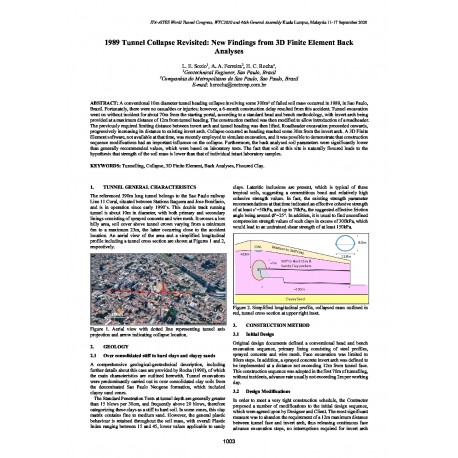Cart
0
0
No document
0,00 €
Total
Document successfully added to your shopping cart
Quantity
Total
There are 0 items in your cart.
There is 1 item in your cart.
Total documents
Total shipping
To be determined
Total
Search & filter
Search for a publication
Search & filter

1989 Tunnel Collapse Revisited: New Findings from 3D Finite Element Back Analyses
id395
L. Eduardo Sozio / A. Alvarez Ferreira / H. Cassio Rocha
A conventional 10m diameter tunnel heading collapse involving some 300m³ of failed soil mass occurred in 1989, in Sao Paulo, Brazil. Fortunately, there were no casualties or injuries; however, a 6-month construction delay resulted from this accident. Tunnel excavation went on without incident for about 70m from the starting portal, according to a standard head and bench methodology, with invert arch being provided at a maximum distance of 12m from tunnel heading. The construction method was then modified to allow introduction of a roadheader. The previously required limiting distance between invert arch and tunnel heading was then lifted. Roadheader excavation proceeded onwards, progressively increasing its distance to existing invert arch. Collapse occurred as heading reached some 30m from the invert arch. A 3D Finite Element software, not available at that time, was recently employed to simulate excavation, and it was possible to demonstrate that construction sequence modifications had an important influence on the collapse. Furthermore, the back analysed soil parameters were significantly lower than generally recommended values, which were based on laboratory tests. The fact that soil at this site is naturally fissured leads to the hypothesis that strength of the soil mass is lower than that of individual intact laboratory samples.


